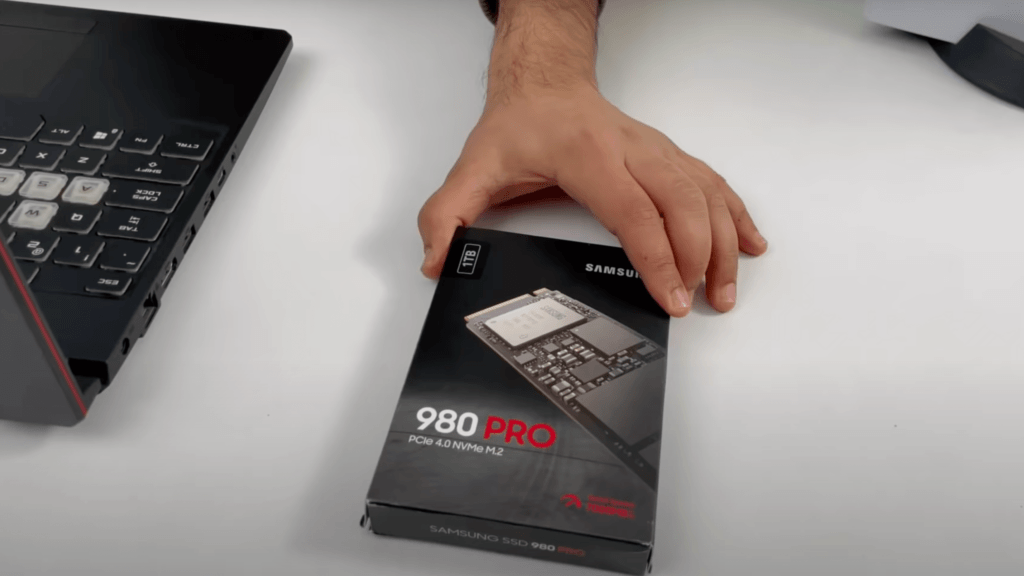Samsung 980 Pro SSD not detected in Windows
Contents
Samsung 980 Pro SSDs are some of the most popular storage drives on the market. Unfortunately, due to their complexity and compatibility with certain systems, there can be occasions where these drives may not be detected by a computer or other devices.
The most likely cause for this problem is an improper installation of the drive or if drivers have yet to be downloaded onto your system.
Booting up with the latest version of BIOS might also help solve the issue if all else fails.
Even beyond that, checking cables and power connections for any damage must also be taken care of when dealing with hardware issues such as with your Samsung 980 Pro SSD.
Samsung SSD not detected – Easy Solution

It can be frustrating when your Samsung SSD is not detected by your system. There are a few possible causes for this issue and some simple steps you can take to troubleshoot it:
- Make sure the SSD cable is securely attached to both the motherboard and the SSD, then power on your system.
- Go into BIOS settings and make sure that the SATA port with the SSD connection has been enabled in System Configuration.
- If all else fails, try manually updating your BIOS firmware or resetting BIOS defaults as this may help resolve any compatibility issues between the OS and hardware.
Hard Disk/SSD not displaying? Try this!
If your hard drive is not displaying in Windows, it could be due to a few reasons. Check the following:
- Make sure the hard disk is properly connected to the SATA cable and power supply cables.
- The hard drive might need to be initialized or formatted if you’re using an old one that hasn’t been used before.
- Your HDD might also not be visible because of some BIOS settings, so go into BIOS and check for any relevant configurations necessary for the drive to show up.
- If all else fails, try running a diagnostic scan on the hard drive and use third-party software to repair any issues found during the process.
Once all these steps have been checked, restart your computer and see if the hard drive can now be detected by Windows 10!
Check Intel & AMD Mobo Reviews.
Why is your NVMe SSD not detected?
There could be various reasons why your NVMe SSD is not detected by your computer. To troubleshoot these issues, make sure to:
- Ensure that the NVMe SSD is properly plugged in or connected.
- Make sure the NVMe SSD is enabled in BIOS settings.
- Check if you need to update the NVMe driver from the manufacturer’s website.
- If none of the above steps work, try re-installing the driver.
If all else fails, it might be worth looking into getting a new NVME SSD as there may be an existing hardware issue causing this problem.
How do you get BIOS to recognize NVMe SSD?
To get BIOS to recognize an NVMe SSD, you’ll need to access the motherboard’s BIOS setup utility. To do this, boot your computer and press F2 or other designated key during start-up.
Then, navigate to
Advanced -> PCI Configuration -> UEFI Option ROM Control
and look for NVMe devices listed under Storage Controller with Slot ID 0x101/102 (may need to scroll to the bottom).
Once the NVMe device is found, it will be ready to use after booting into Windows.
In order for these settings to take effect, don’t forget to save your changes by pressing F10!
After that, you can try this.
- Open BIOS and prioritize your SSD in boot settings.
- Use Disk Management to format the drive and give it a label.
- Go into Windows Settings and run the Hardware & Devices Troubleshooter.
Here’s a video demonstrating a quick solution to this problem.
You might like reading knowledge base & solutions articles.
- ASUS TUF Gaming B550-PLUS WiFi II Review - December 31, 2025
- ASRock Z790 PG Lightning Motherboard Review - December 31, 2025
- Top 5 Best RTX 4090 Graphics Cards - December 30, 2025